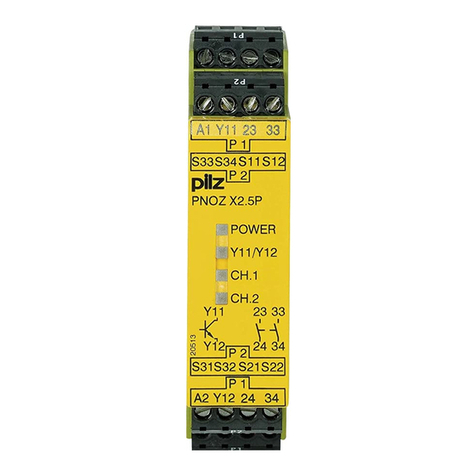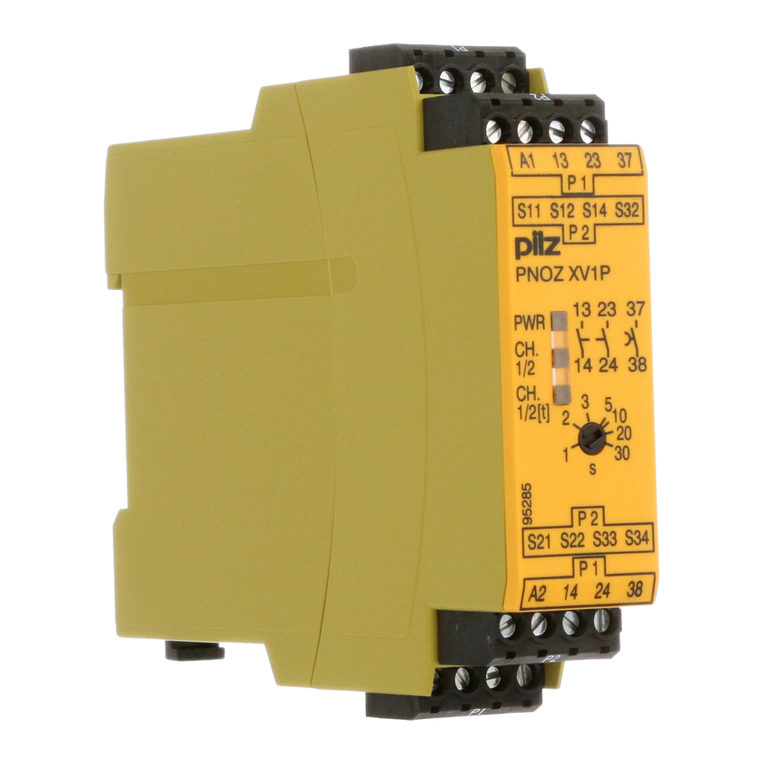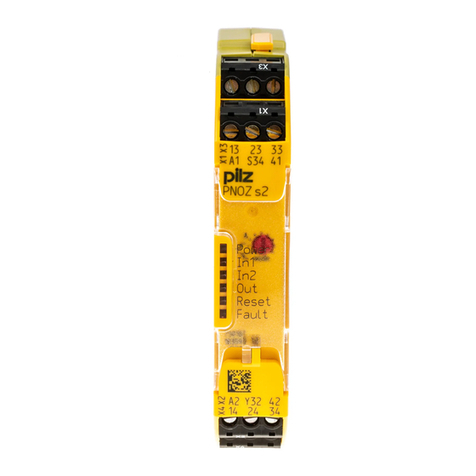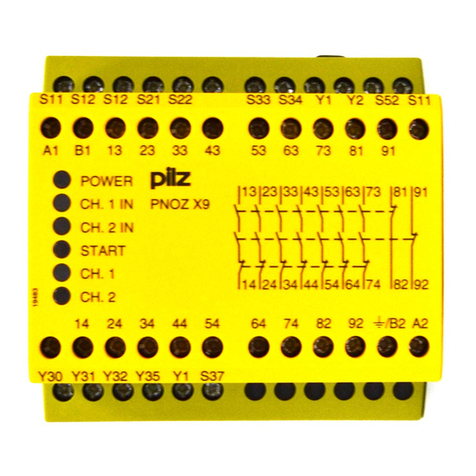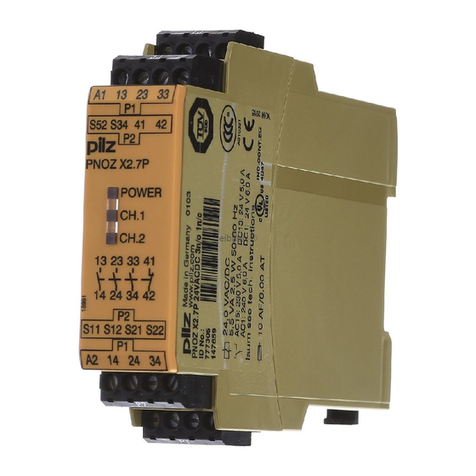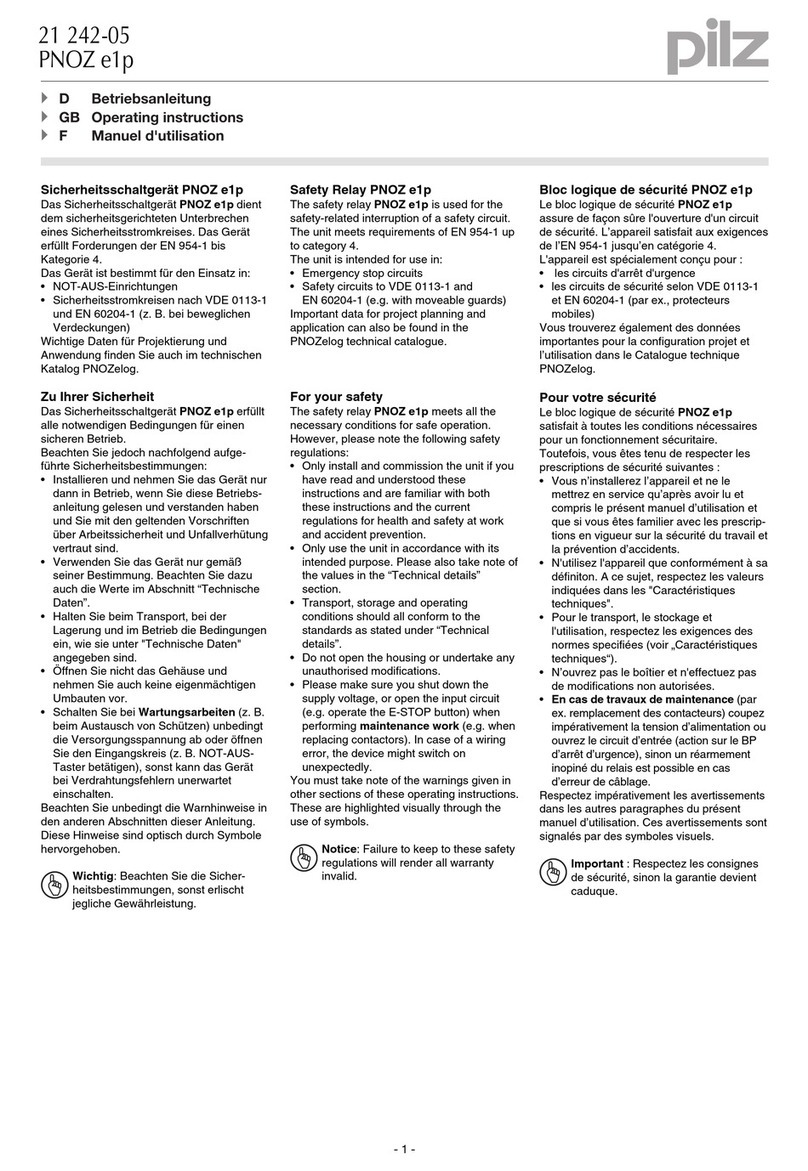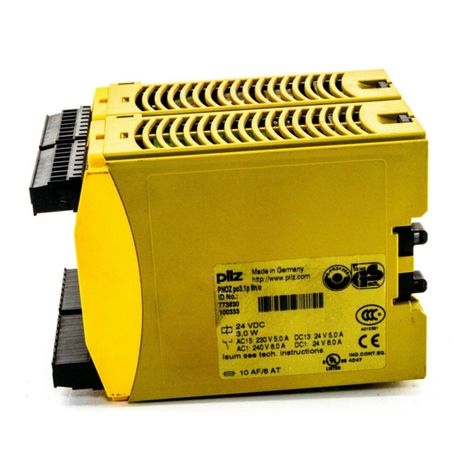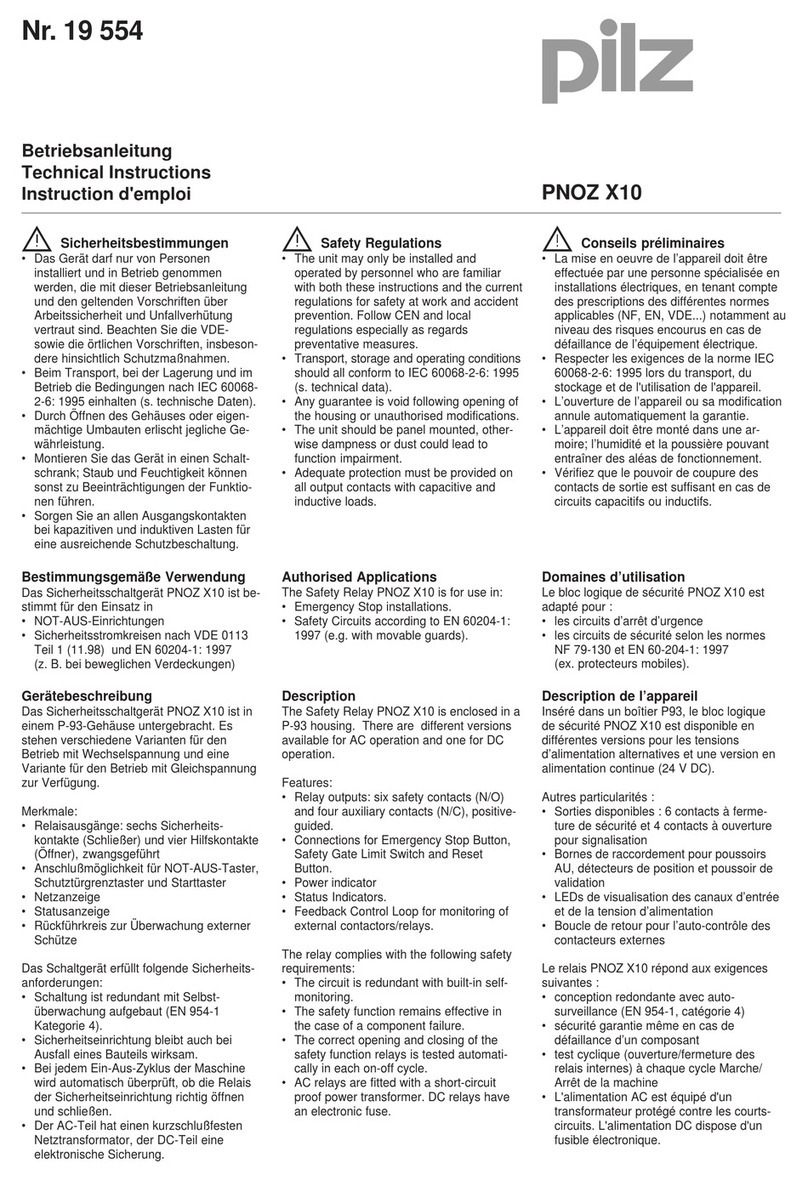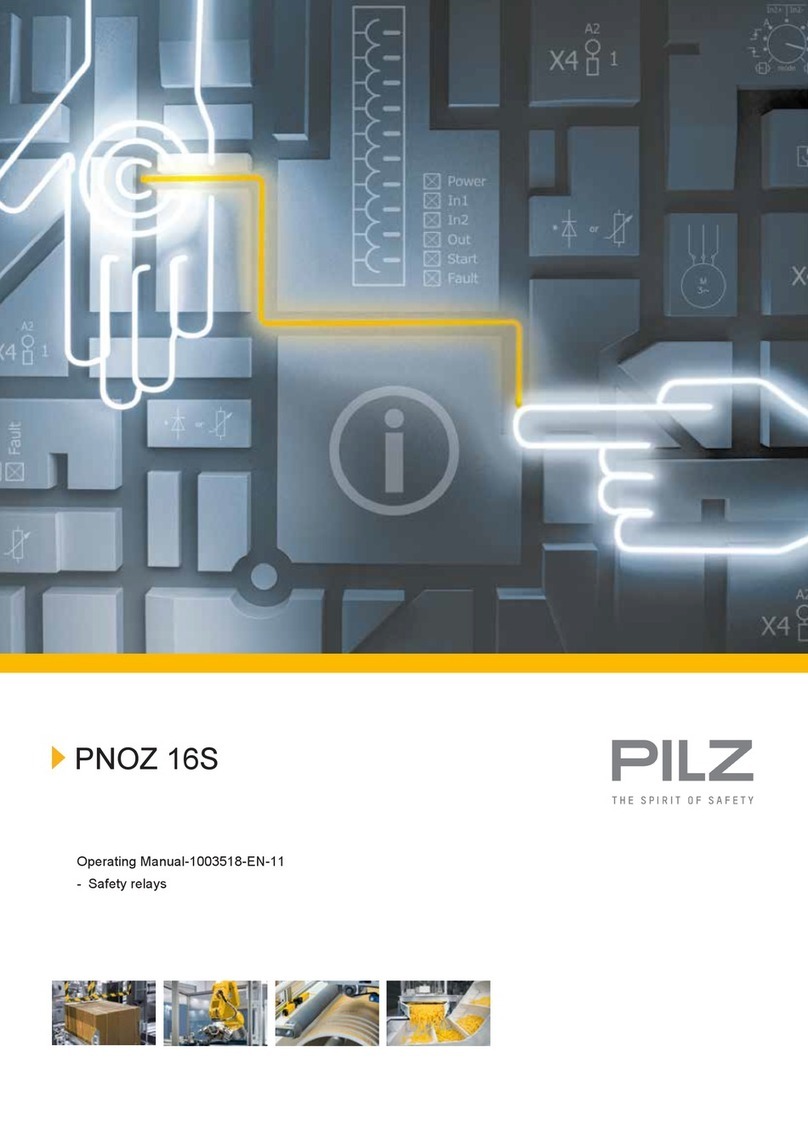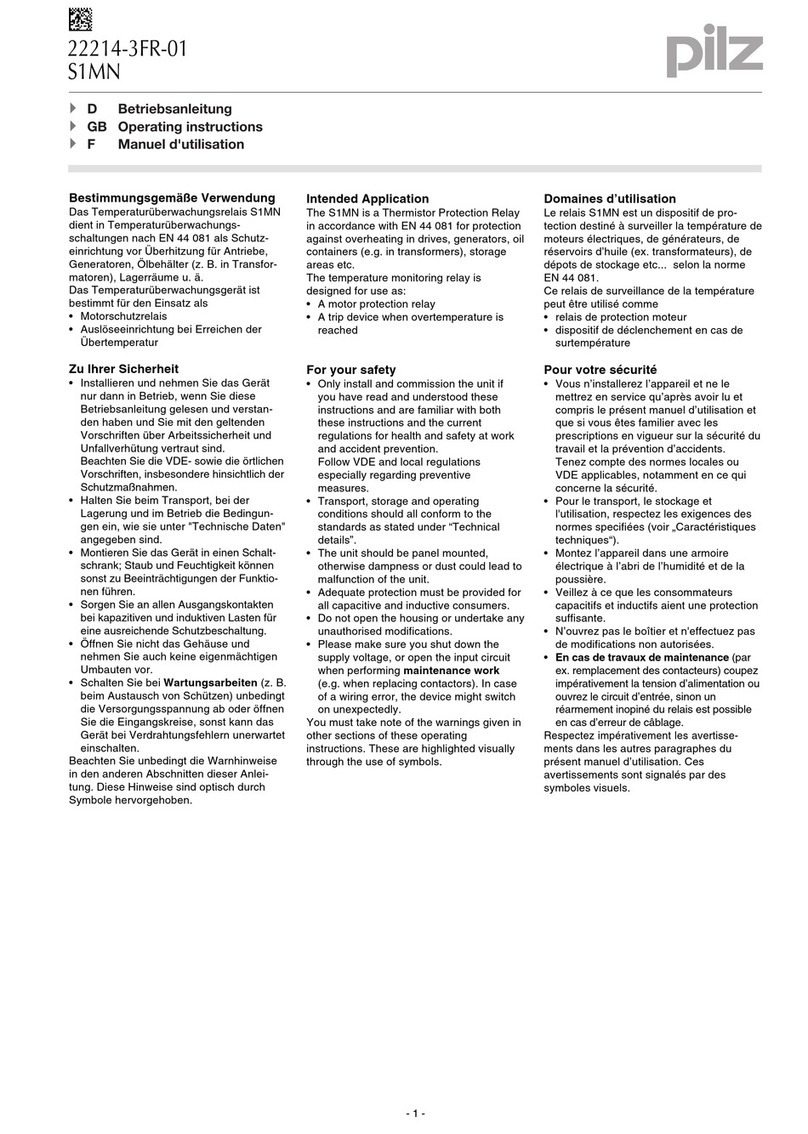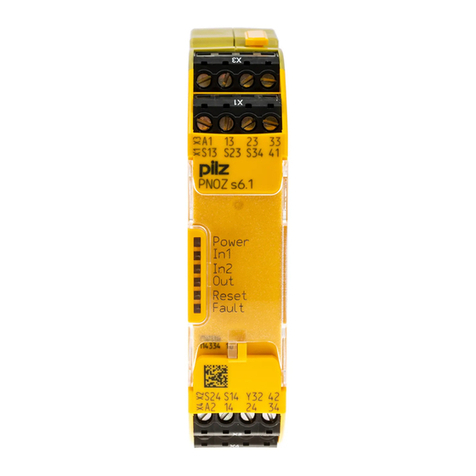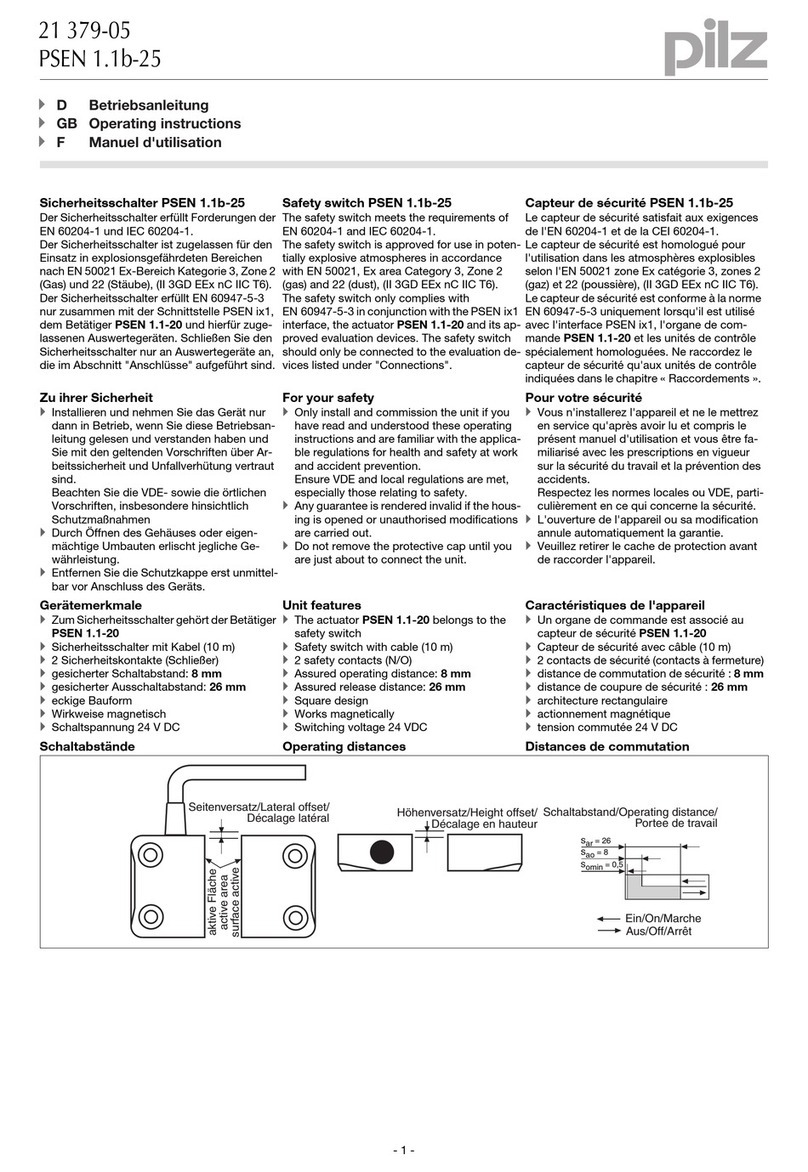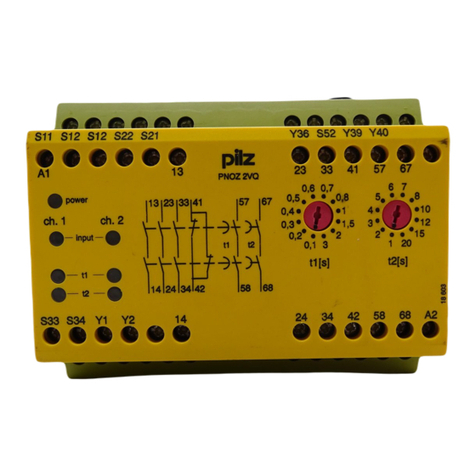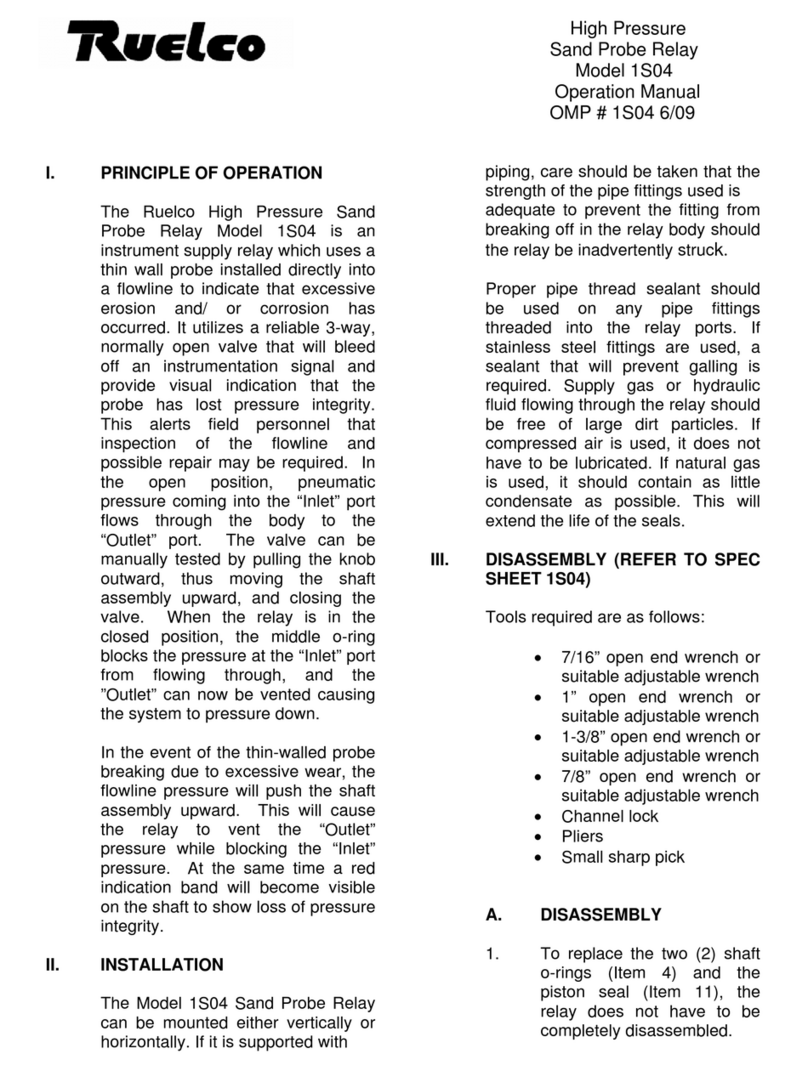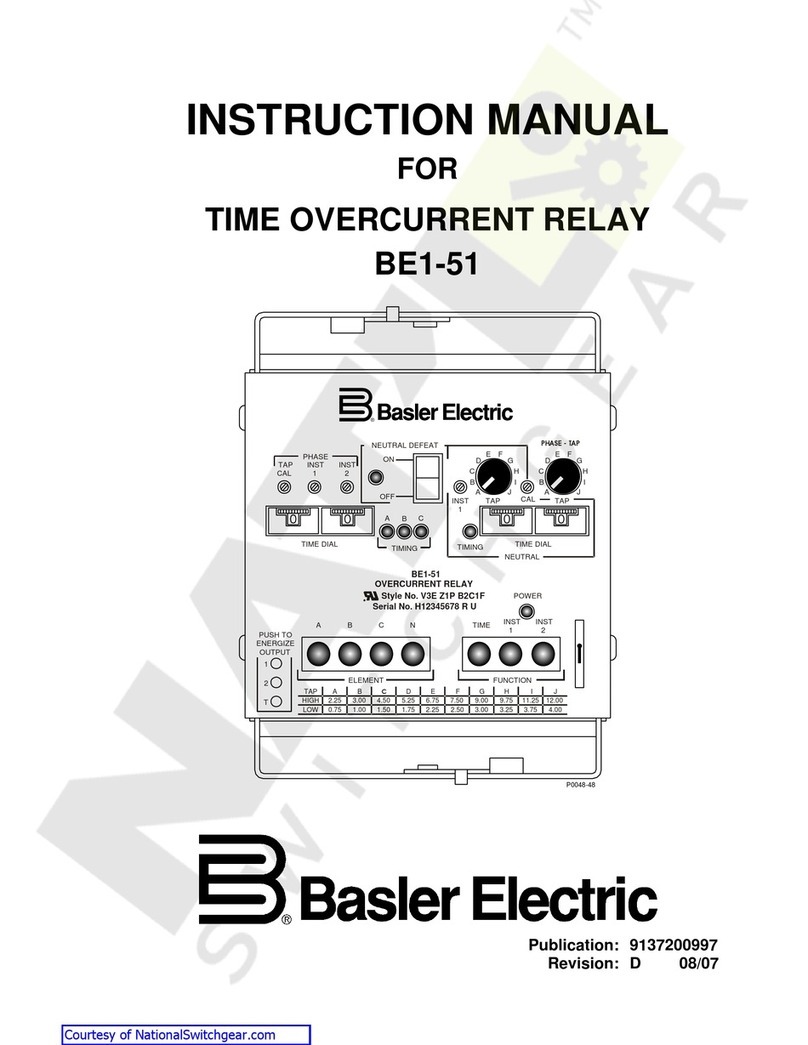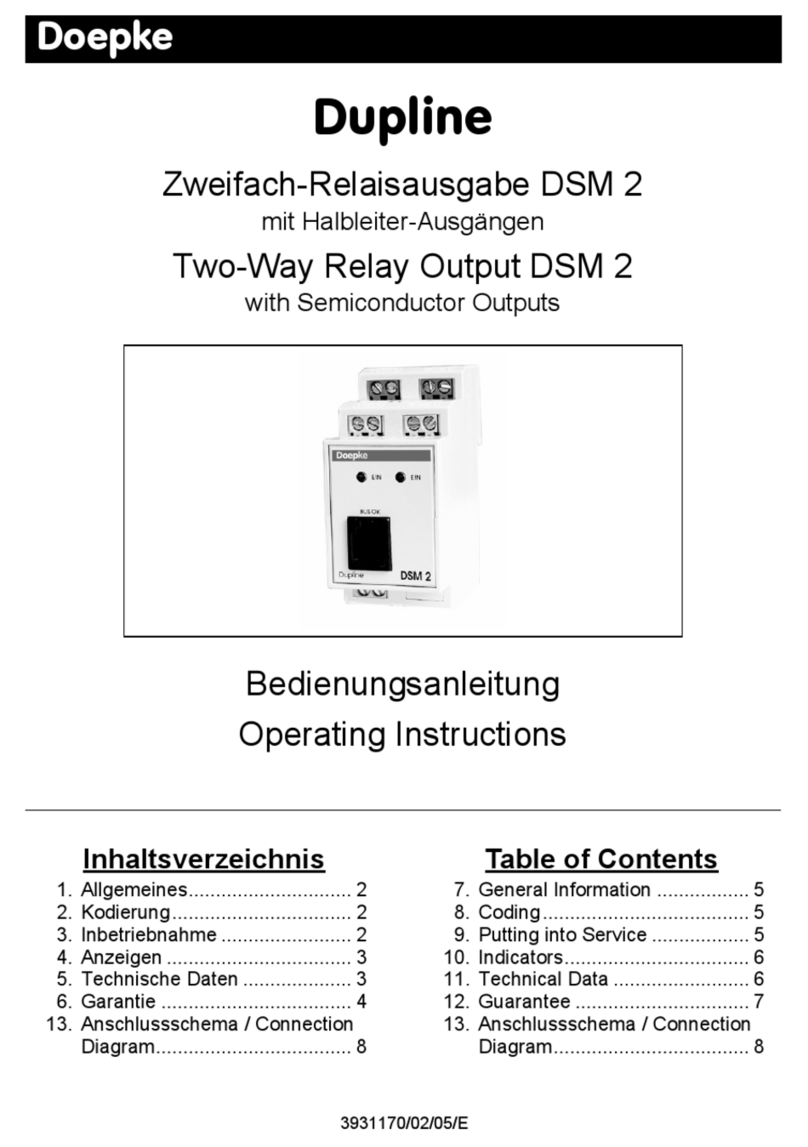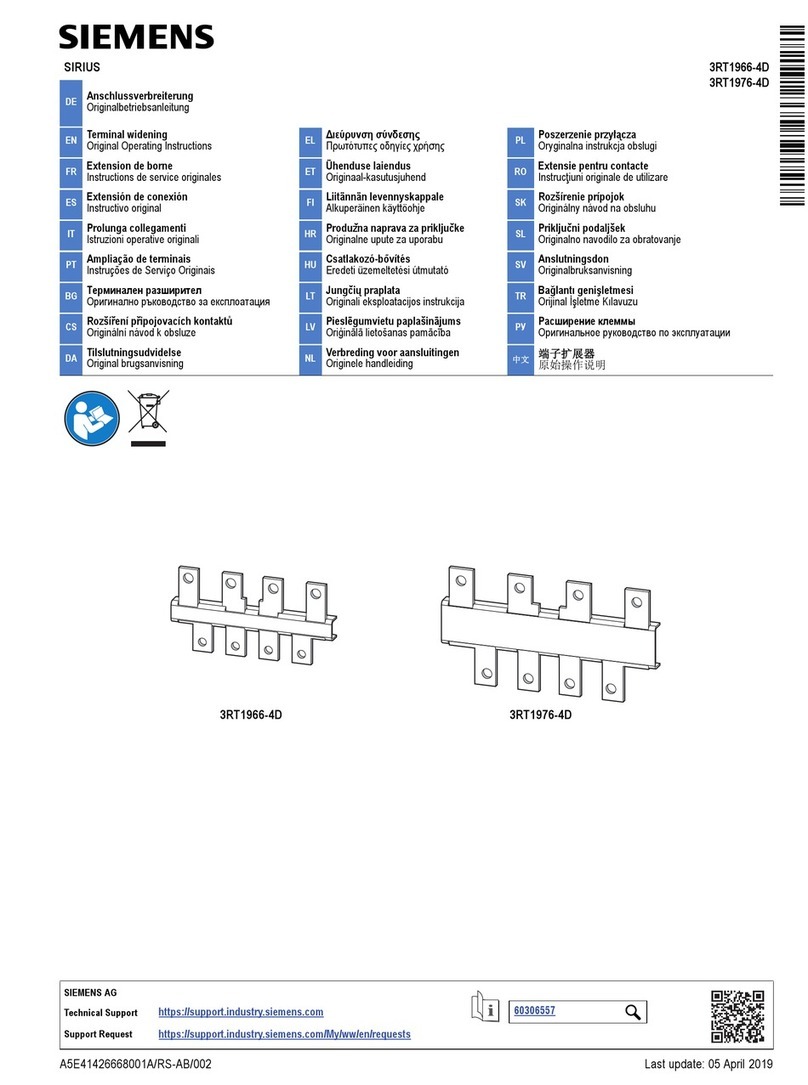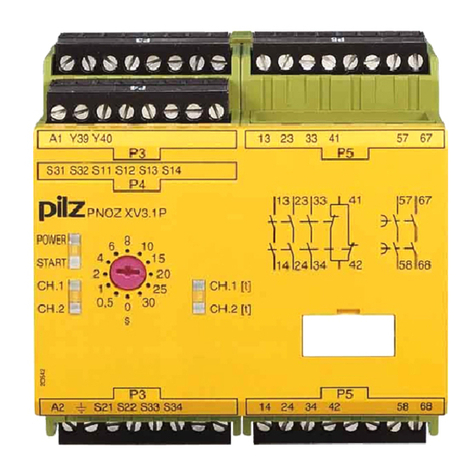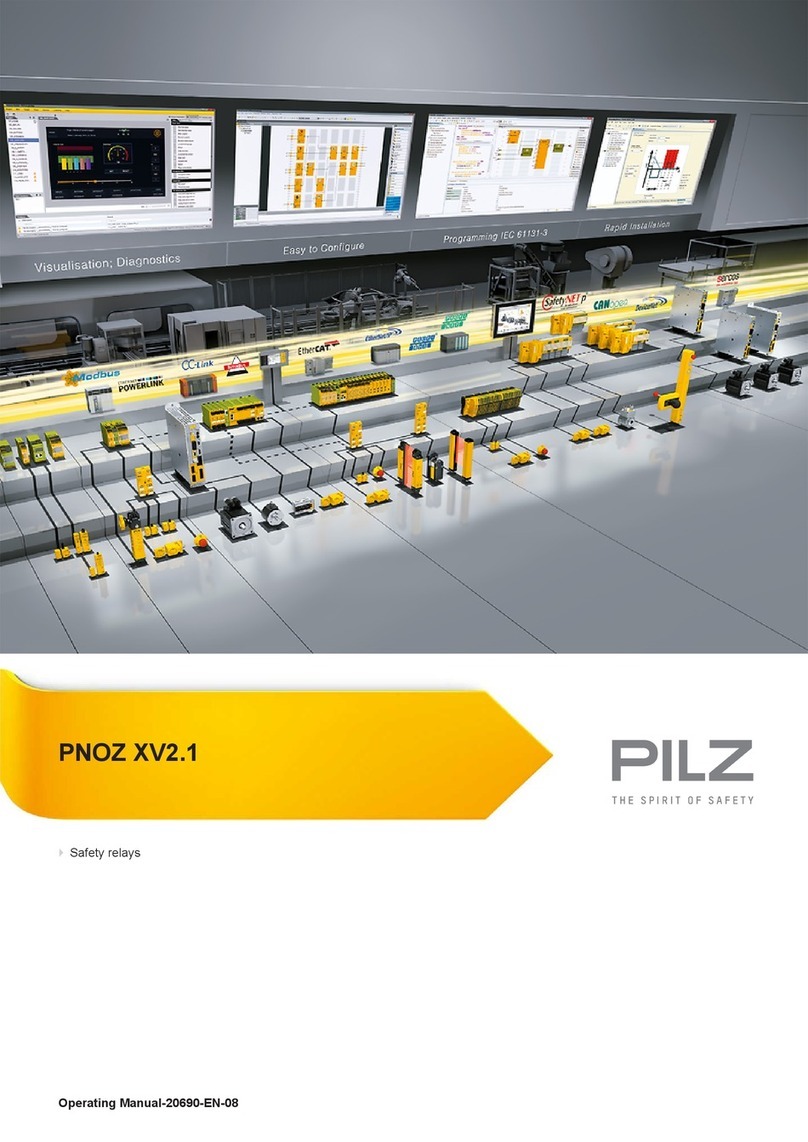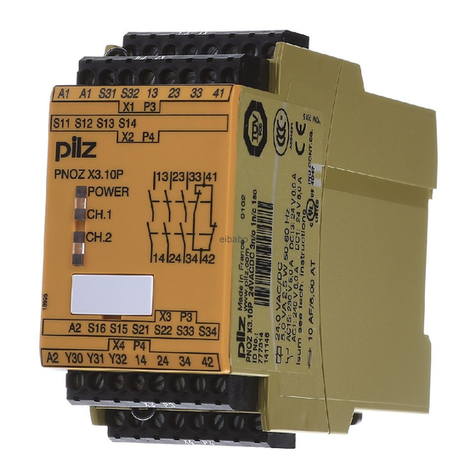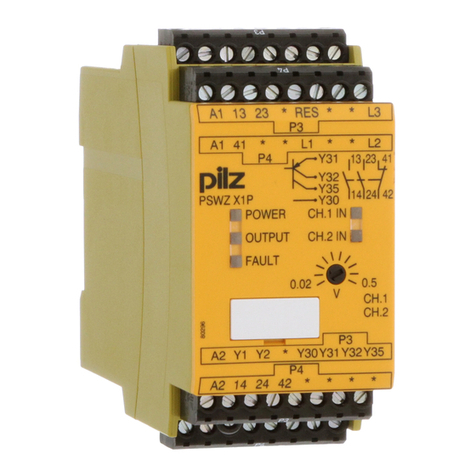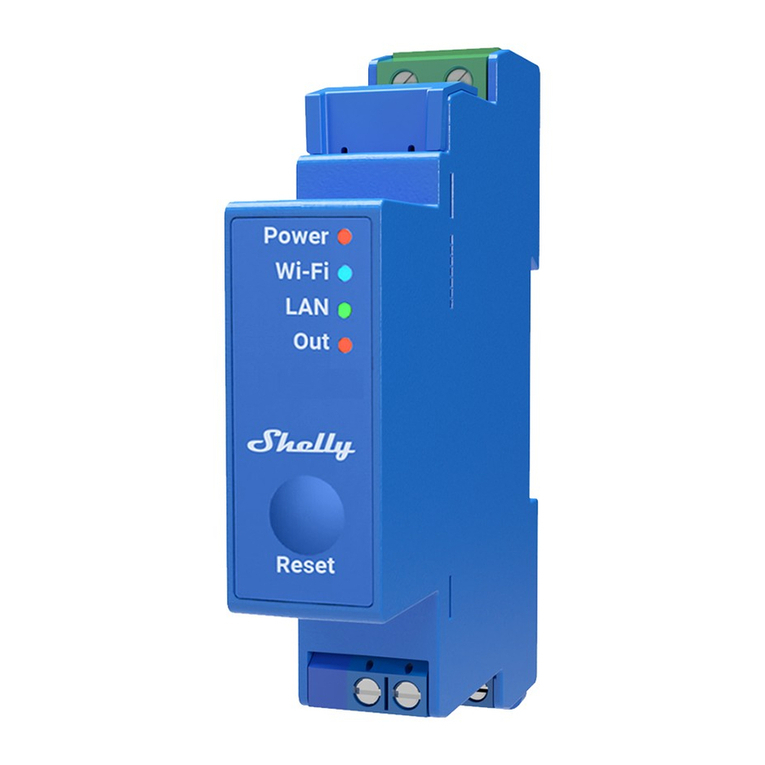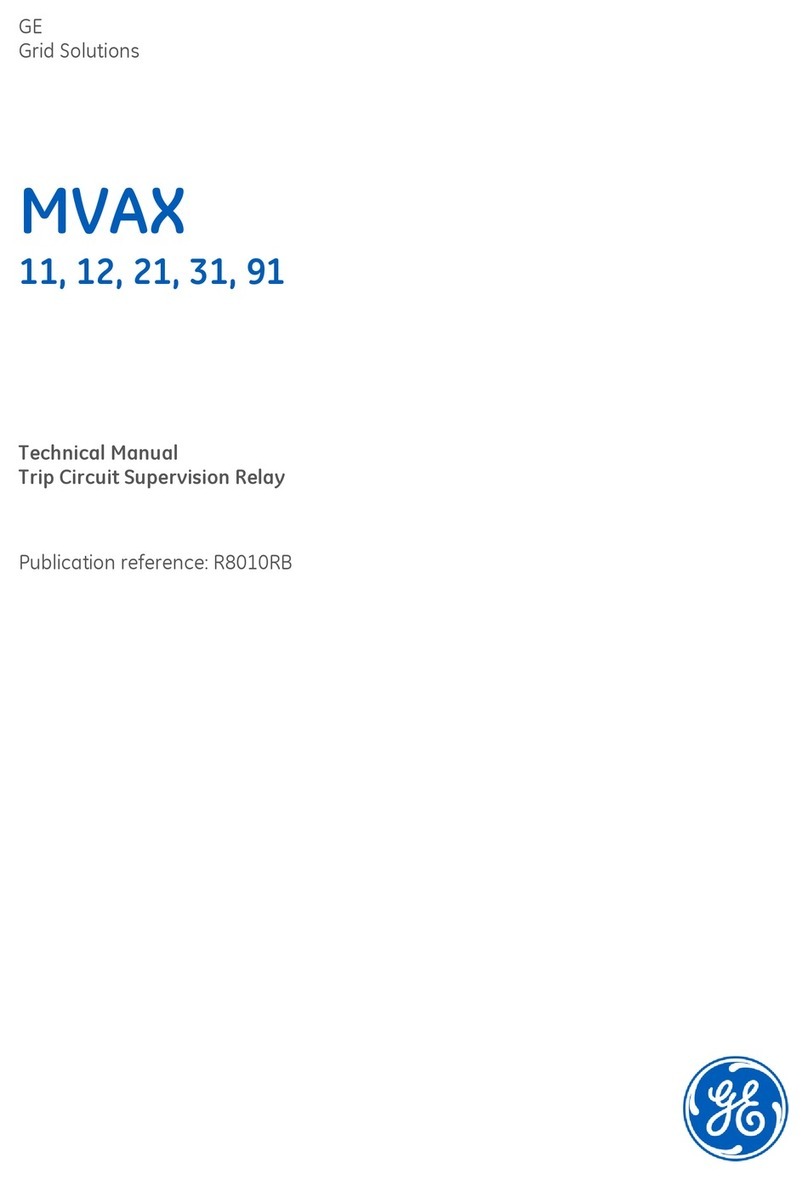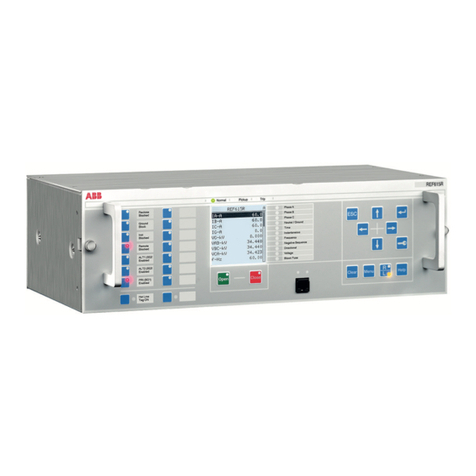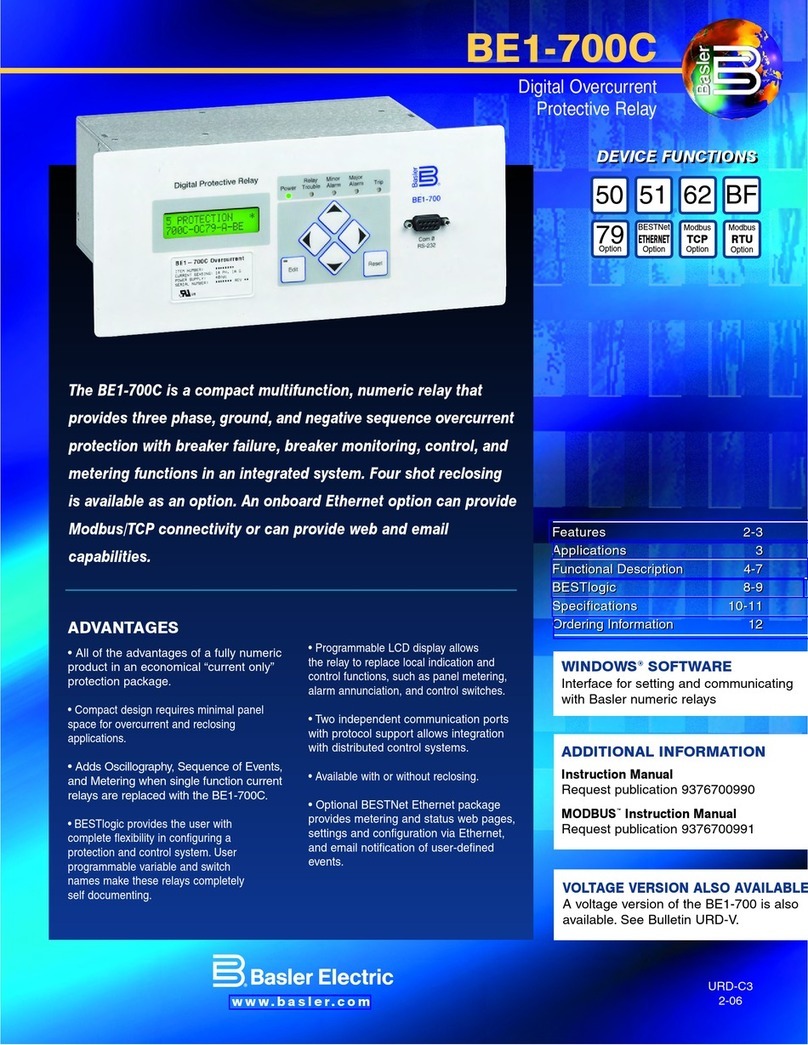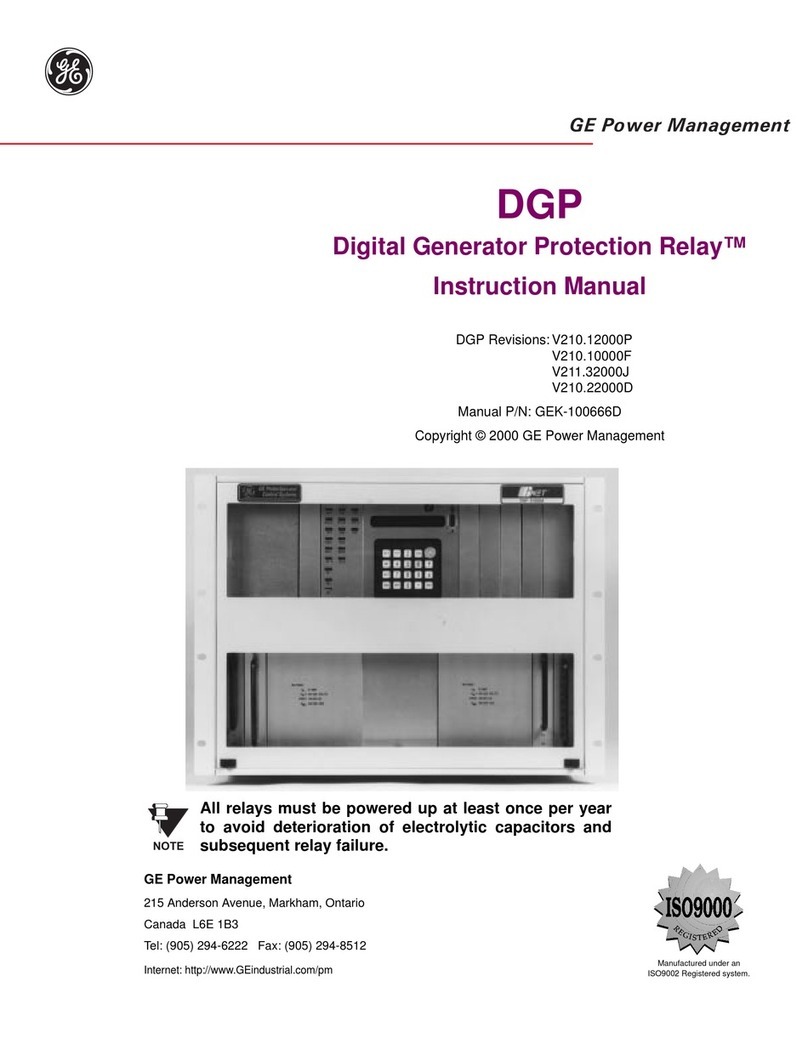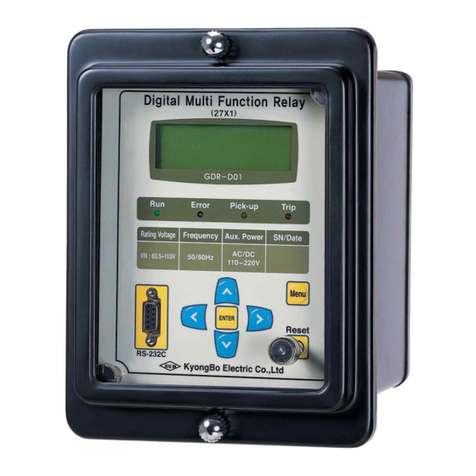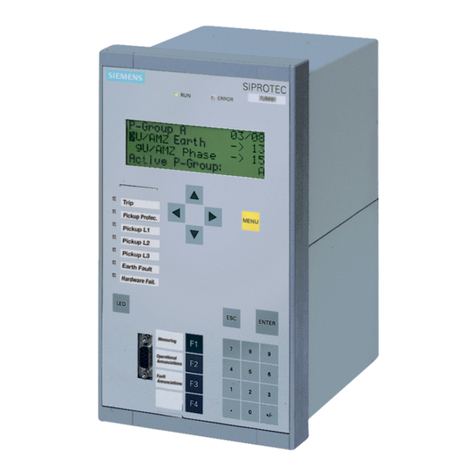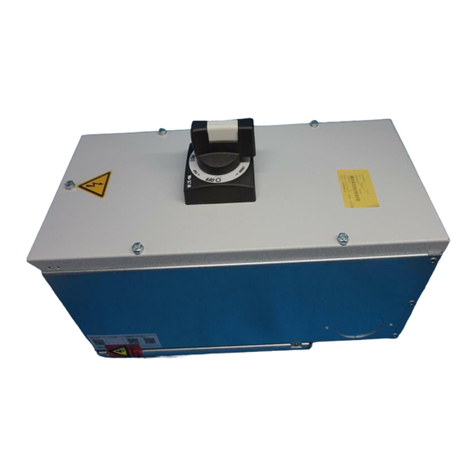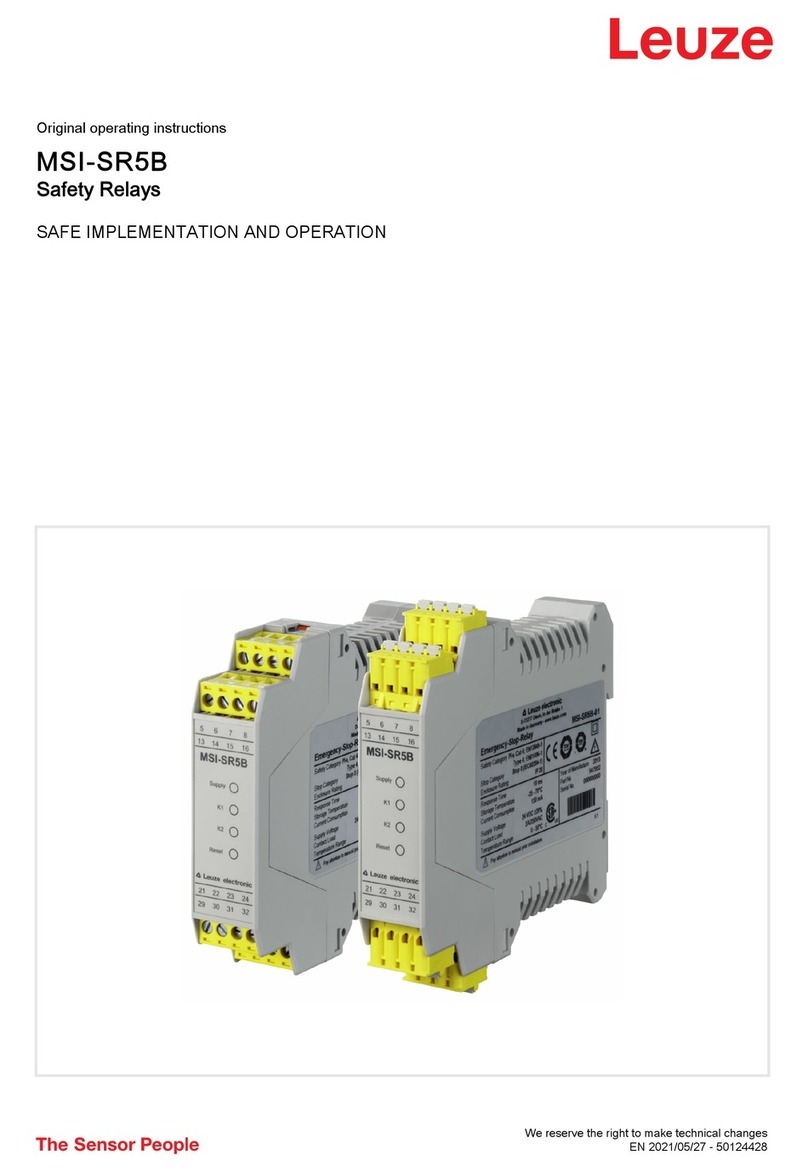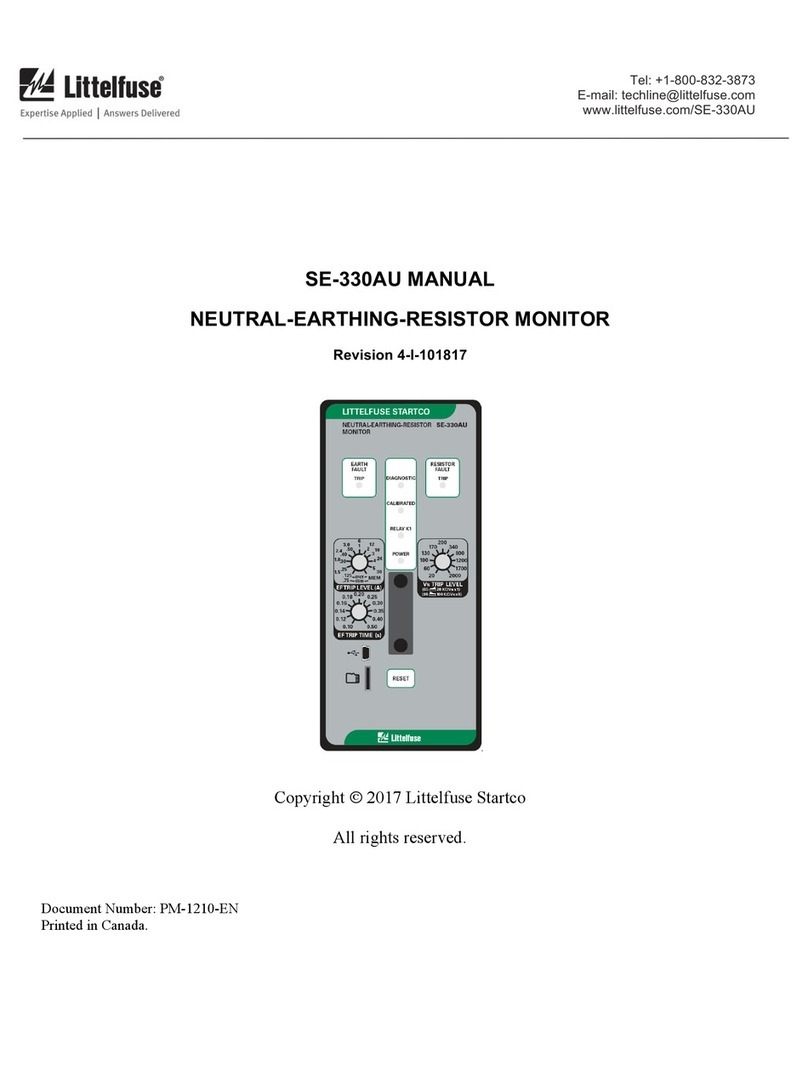
- 8 -
Características funcionales
El relé PNOZ X1P sirve para una
interrupción por motivos de seguridad, de un
circuito de seguridad.
Requisitos: Poner bajo tensión de alimenta-
ción por medio del pulsador de parada de
emergencia, puente entre Y1-Y2 o el parada
de rearme entre Y1-Y2 accionada. Se en-
ciende el LED „Power“.
• Circuito de entrada cerrado (por ej. pulsa-
dor de emergencia no accionado)
Los relés K1 y K2 pasan a posición activa
y se automantienen. Los LED „CH. 1“ y
„CH. 2“ se encienden. Los contactos de
seguridad 13-14/23-24/33-34 están cerra-
dos, el contacto auxiliar 41-42 está abierto.
• Circuito de entrada abierto (por ej. pulsa-
dor de emergencia accionado)
K1 y K2 pasan a posición de reposo. Los
contactos de seguridad 13-14/23-24/33-34
se abren de forma redundante, el contacto
auxiliar 41-42 se cierra.
A: Operación lógica, test cíclico,
lógica de control/
Logica di inserimento, test ciclico;
logica di comando/
Inschakellogica, cyclische test,
besturingslogica
1: Canal 1/Canale 1/Kanaal 1
2: Canal 2/Canale 2/Kanaal 2
14 34
K2
K1
13 33
~
=
F
G
A2
A1
A
1
2
Y1 Y2
24
23 41
42
=
=
Fig. 1: Diagrama de conexionado interno/
Schema di collegamento/
Intern schema
Descrizione del funzionamento
L’apparecchio elettrico PNOZ X1P serve per
interrompere in modo sicuro un circuito
elettrico di sicurezza.
Presupposto: applicazione della tensione di
alimentazione attraverso il pulsante di
arresto di emergenza, ponticello tra Y1-Y2
oppure pulsante di start tra Y1-Y2 azionato.
Il LED “Power” è acceso.
• Con il circuito di entrata chiuso (per es.
pulsante di arresto di emergenza non
azionato), il relè K1 e K2 si attivano
automantenendosi. I LED „CH. 1“ e „CH. 2“
sono accesi. I contatti di sicurezza 13-14/
23-24/33-34 sono chiusi, il contatto
ausiliario 41-42 è aperto.
• Quando il circuito di entrata viene aperto
(per es. in caso di azionamento del
pulsante di arresto di emergenza), K1 e K2
tornano nella posizione di riposo. I contatti
di sicurezza 13-14/23-24/33-34 vengono
aperti in modo ridondante, il contatto
ausiliario 41-42 viene chiuso.
Functiebeschrijving
Het relais PNOZ X1P dient om een
veiligheidscircuit met zekerheid te
onderbreken.
Voorwaarde: aansluiten van de
voedingsspanning met de noodstopknop,
brug tussen Y1-Y2 of startknop tussen Y1-
Y2 bediend. De LED „Power“ licht op.
• Ingangscircuit gesloten (b.v.
noodstopknop niet bediend):
relais K1 en K2 worden bekrachtigd en
nemen zichzelf over. De LED’s „CH1“ en
„CH2“ lichten op. De veiligheidscontacten
13-14/23-24/33-34 zijn gesloten, het
hulpcontact 41-42 is geopend.
• Ingangscircuit wordt geopend (b.v.
noodstopknop bediend):
K1 en K2 vallen af. De
veiligheidscontacten 13-14/23-24/33-34
worden redundant geopend, het
hulpcontact 41-42 wordt gesloten.
Bedrijfsmodi:
• Eenkanalig bedrijf: ingangsschakeling
volgens VDE 0113 en EN 60204, geen
redundantie in het ingangscircuit.
Aardsluitingen in het ingangscircuit
worden gedetecteerd.
• Automatische start: apparaat is actief
zodra het ingangscircuit gesloten is.
• Handmatige start: apparaat is pas actief
wanneer een startknop bediend wordt.
• Contactvermeerdering en -versterking
door aansluiting van externe magneet-
schakelaars.
Montage
Het veiligheidsrelais dient gemonteerd te
worden in een schakelkast die minimaal
voldoet aan beschermingsgraad IP 54.
Bevestiging op een DIN-rail is mogelijk via
de daarvoor bestemde relaisvoet.
Bij montage op een verticale draagrail
(35 mm) moet het apparaat worden
vastgezet met een eindsteun.
Ingebruikname
Bij ingebruikname in acht nemen:
•Uitgangscontacten afzekeren (zie
technische gegevens) om het
verkleven van de contacten te
voorkomen.
• Berekening van de max. kabellengte Imax
op het ingangs-, start- en
terugkoppelcircuit:
Modalità operative:
• Funzionamento monocanale: Cablaggio di
entrata secondo VDE 0113 e EN 60204,
senza ridondanza del circuito di entrata; le
dispersioni verso terra vengono rilevate nel
circuito del pulsante di arresto di emergen-
za.
• Start automatico: L’apparecchio è attivo
non appena il circuito di entrata è chiuso.
• Start manuale: L’apparecchio è attivo solo
dopo che è stato azionato un pulsante
start.
• Moltiplicazione ed amplificazione dei contatti
mediante il collegamento di relè esterni.
Montaggio
L’apparecchio elettrico di sicurezza deve
essere montato in un armadio elettrico con un
tipo di protezione di min. IP 54. Per il fissaggio
su guida DIN è previsto un elemento di
incastro sul lato posteriore dell’apparecchio.
In caso di montaggio su una guida verticale
(35 mm) fissare il dispositivo per es. con un
supporto terminale o una staffa angolare
terminale.
Messa in funzione
Per la messa in funzione rispettare quanto segue:
•A monte dei contatti di uscita si deve
collegare un fusibile (vedi Dati tecnici)
per impedire la saldatura tra i contatti
stessi.
• Calcolo della massima lunghezza di
conduzione Imax sui circuiti d’ingresso, di
start e di retroazione:
Modos de funcionamiento:
• Modo monocanal: Conexión de la entrada
según VDE 0113 y EN 60204, no existe la
redundancia en el circuito de entrada, se
detecta el defecto a tierra del circuito del
pulsador.
• Rearme automático: El dispositivo se
activa tan pronto como se cierra el circuito
de entrada.
• Rearme manual: El dispositivo sólo se
activa tras pulsar un pulsador de rearme.
• Aumento del número de contactos y del
poder de corte con el empleo de
contactores externos.
Montaje
El dispositivo de seguridad debe montarse
en un armario eléctrico con una protección
mín. de IP 54. Para fijación sobre una guía
DIN dispone de un elemento de enclava-
miento el el lado posterior del dispositivo.
Debe asegurarse el dispositivo para el
montaje sobre un riel portante vertical
(35 mm) mediante un elemento de fijación
como p. ej. tope terminal o ángulo de cierre.
Puesta en funcionamiento
En la puesta en funcionamiento tenga en
cuenta lo siguiente:
•Para evitar contactos soldados por
sobrecalentamiento, conectar un
fusible (ver datos técnicos) antes de
los contactos de salida.
• Cálculo de la longitud de línea máxima
Imáx en circuito de entrada, de rearme y de
realimentación:
